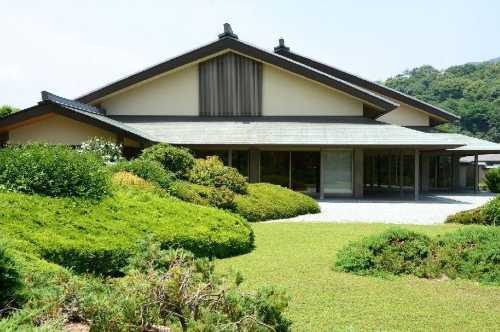Popular Trip Moments
Photogenic Onomichi in Hiroshima | Onomichi|A Retro Filtered Little Kyoto in Setouchi | Hiroshima Prefecture: Onomichi City Tourist Spots - Stunning Views and Gourmet Delights | Senkoji Temple on the hill, Onomichi City | Senkoji Temple and Park | [Hiroshima/Ikuchijima] Cycling along the Shimanami Kaido by rental bicycle | 【Onomichi】Tenningji Temple Three-Storied Pagoda | Summer Trip to Senkoji Park: A Perfect Encounter of Culture and Nature | Freshly made gelato shop on the Setouchi Shimanami Kaido🍨 | Highly Recommended Cafe in Hiroshima | Enjoy the Autumn Leaves and Stunning Views of the Seto Inland Sea at Shiratakiyama Observatory in Innoshima, Hiroshima Prefecture | Senkoji Temple, Onomichi City, Hiroshima Prefecture. | Setouchi Cycling Tour.
DAY 34: Sea Travel Day | Onomichi one-day trip recommended! | [Onomichi, Hiroshima] A place that feels like Greece | [Onomichi, Hiroshima] Onomichi Ramen | Onomichi, a small town located in the southern part of Honshu Island, Japan. | Senkoji | Hiroshima Itsukushima Shrine | ⦅Hiroshima⦆ Future Heart Hill🤍~A world view that makes you feel like you're abroad🌎~ | Embark on a Soul-Cleansing Romantic Journey in Onomichi | A Sacred Sunset at Miyajima’s Floating Torii Gate | Architectural Grandeur | Beautiful Scenery Like Another World in Hiroshima | "Mionomichi" (Water Tail Road) | Shikoku Route + Seto Inland Sea Cycling Tour | 🌟 Onomichi's Hidden Gem: Bella Vista Spa & Marina 🌊✨ | Onomichi day trip | Onomichi · Senkoji Temple and Cat Alley
Recommended Attractions at Popular Destinations
Bangkok attraction near me | Manila attraction near me | Tokyo attraction near me | Taipei attraction near me | Hong Kong attraction near me | Seoul attraction near me | Kuala Lumpur attraction near me | Los Angeles attraction near me | Shanghai attraction near me | New York attraction near me | Shenzhen attraction near me | Osaka attraction near me | Singapore attraction near me | London attraction near me | Guangzhou attraction near me | San Francisco attraction near me | Beijing attraction near me | Macau attraction near me | Bali attraction near me | Jakarta attraction near me | Paris attraction near me | Ho Chi Minh City attraction near me | Istanbul attraction near me | Phuket attraction near me | Chicago attraction near me | Seattle attraction near me | Toronto attraction near me | Orlando attraction near me | Cebu attraction near me | Chiang Mai attraction near me
Popular Attractions
MONT DU VILLARD NORD | Skyline Adventure Phuket | Ain Dubai | Phuket FantaSea | Sky Views Observatory | Cangshan Mountain | Night Safari | Jinli Lijing Water World | Genting Highlands Premium Outlets Cable Car | Virtual Reality park Dubai Mall | Naama Bay | VinWonders Nha Trang | No. 1 Mountain of Eastern Zhejiang: Snow Mountain Happy Valley | Yas Waterworld Abu Dhabi | Clark Aqua Planet | Shixin Peak | The site of the first CPC National Congress | Former Residence of Zhou Enlai in Shanghai | Soong Ching-ling Memorial Park | Meicun Taibo Temple | Vibhishan Mandir | Reserva Natural de Vila Fria | Masjid Darussalam | Park buracão calistenia | Masjid Jami Aliyah | Рождественский рынок 2021 | Mechet' | 金狻寺 | MJ ARENA Court - Sadai | River Lodge
Popular Restaurants in Onomichi
Azumi Setoda | Harbor Cafe | Karasawa | Restaurant YOSORO -Ryokan Onomichi Nishiyama- | Bingosaryo | Restaurant Sumiyoshi (Onomichi Royal Hotel) | Japanese Dining SOBO | Thai Food Tarntawan | Oyatsu-to-Yamaneko | Komedoko Shokudo | The Restaurant | Bistro Louche | 365ONOMICHI | Main Dining Erretegia | Onomichi Ramen Ichibankan | Porta di Mare | Tonchinkan | L'ESPOIR du cafe | Yamaneko | Sabo Common | Cafe Terrance Sainohana | Yamaneko Mill | Itoi | John Burger and Cafe | Onomichi Roman Coffee Main Store | USHIO CHOCOLATL | Butti Bakery | Miyachi Ramen | Onomichi Ramen Tani | Yard Cafe
Popular Ranked Lists
Top 19 Local Restaurants in Osaka | Popular Luxury Hotels Near Madonna di Campiglio | Top 3 Best Things to Do in Izmir | Popular Best Things to Do in Tel Aviv | Popular Best Things to Do in Cairo | Popular Luxury Hotels Near Verona | Top 18 Local Restaurants in Bangkok | Popular Premium Hotels in Kachreti | Popular Luxury Hotels in Como | Popular Luxury Hotels Near Selva di Val Gardena | Popular Local Restaurants in Yangzhou | Popular Local Restaurants in Hong Kong | Popular Luxury Hotels Near Santa Margherita di Pula | Top 5 Premium Hotels in Qesm Al Qoseir | Popular Local Restaurants in George Town | Top 5 Best Things to Do in Riyadh | Popular Best Things to Do in Montreal | Popular Premium Hotels in York | Popular Local Restaurants in Quanzhou | Top 4 Best Things to Do in Detroit | Top 17 Local Restaurants in Xishuangbanna | Popular Best Things to Do in Mexico City | Popular Best Things to Do in Irkutsk | Top 20 Best Things to Do in Sao Paulo | Top 6 Luxury Hotels in Moscow region | Top 19 Local Restaurants in Kuala Lumpur | Popular Premium Hotels in Malakonta | Top 17 Local Restaurants in Tokyo | Popular Luxury Hotels Near Kapalua | Top 7 Best Things to Do in Colombo
Payment Methods
Our Partners
Copyright © 2025 Trip.com Travel Singapore Pte. Ltd. All rights reserved
Site Operator: Trip.com Travel Singapore Pte. Ltd.
Site Operator: Trip.com Travel Singapore Pte. Ltd.






















